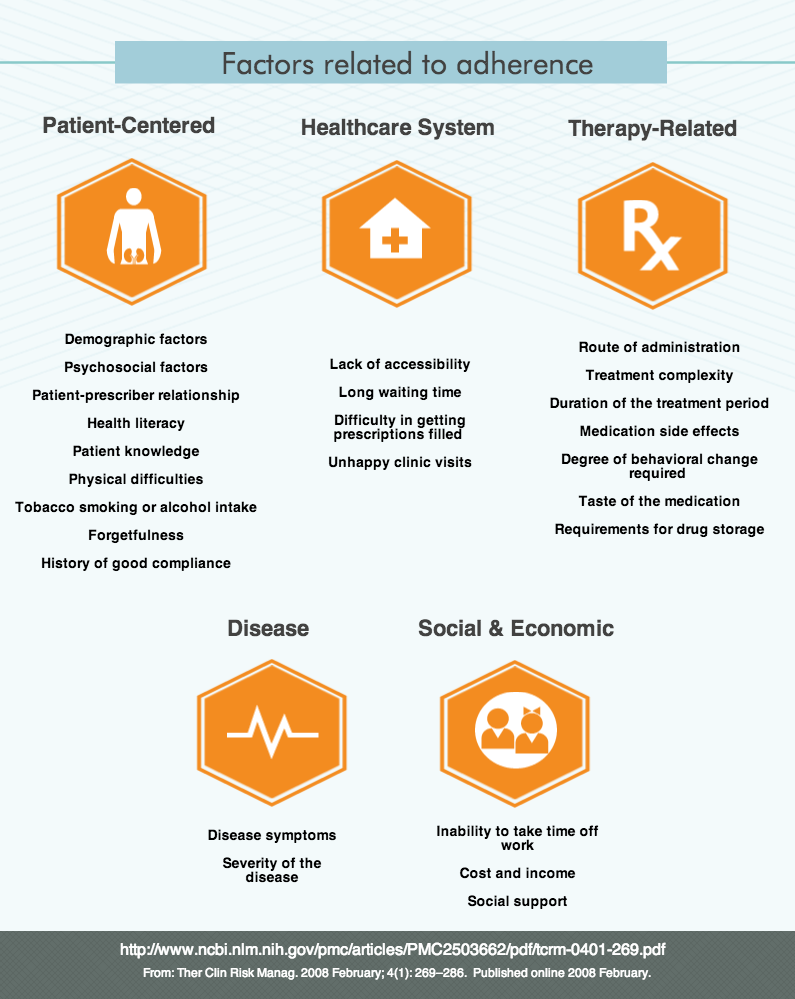Just as no two patients are identical, the factors that affect adherence vary dramatically from patient to patient, and also importantly what type of treatment plan they are adhering to. Adherence to medication is often affected by medication itself: side-effects, contraindications, timing, and the way it is applied. Adherence to a physical rehabilitation program is affected by the function of the patient, very often by the level of pain they feel, and sometimes by the patients own belief in their abilities.
Just as no two patients are identical, the factors that affect adherence vary dramatically from patient to patient, and also importantly what type of treatment plan they are adhering to. Adherence to medication is often affected by medication itself: side-effects, contraindications, timing, and the way it is applied. Adherence to a physical rehabilitation program is affected by the function of the patient, very often by the level of pain they feel, and sometimes by the patients own belief in their abilities. Adherence to diet is affected by so many factors including, access to appropriate food and social pressure. Even with these differences, though there are a number of common factors that affect patient adherence, both negatively and positively.
The 2008 study “Factors affecting therapeutic compliance: A review from the patient’s perspective” provides a comprehensive review of research on the subject, and presents this view of the factors.
As a provider, there are some areas that you can influence, and some that are data points that might help inform how you approach the patient. You probably can’t impact their socio-economic situation, but you can understand how it might impact their treatment. For example, how big of a factor is cost or transportation in their ability to adhere to a program? Trying to save money often results in patients trying to take fewer pills than prescribed. We spoke with one arthritis researcher who prescribed swimming for her patients, however, for many of them the cost of a gym membership and transportation to the pool was prohibitive.
When putting together a treatment plan for a patient, it’s good to keep all of these factors in mind, working with the patient to come up with a plan in which they are most likely to succeed. Tailoring the plan to the patient lifestyle, rather than the other way around.
